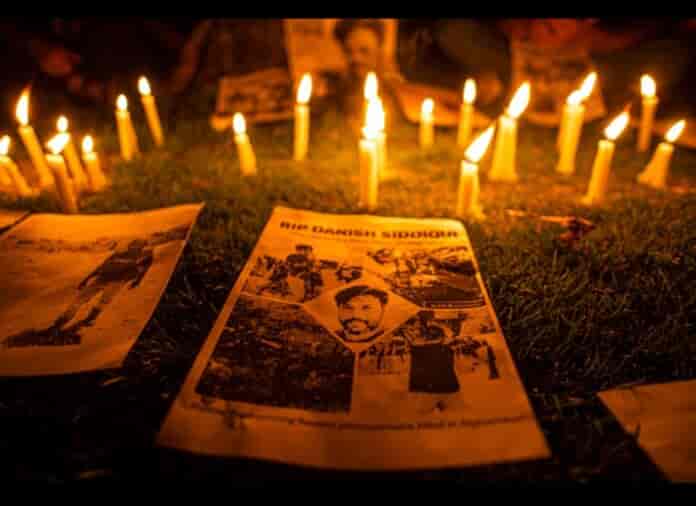On the morning of 16 July, the global journalist community woke up to the shocking news of the killing of Reuters photographer Danish Sidiqqui.
The 38-year-old journalist was killed during clashes between Taliban militants and Afghan security forces. Siddiqui was on assignment to the war torn country as NATO and US forces left the country after decades of conflict. He was embedded with the government forces. The Reuters’ India photo chief had posted pictures of himself and Afghan forces while doing his job a couple of days before his death.
Siddiqui’s loss was mourned by one and all, from journalists to politicians to those holding the highest seats of power. Among those to pay tributes to the slain journalist was the United Nations General Secretary, Antonio Guterres.
“The Secretary General grieves the journalists killed or indeed harassed anywhere in the world and the case of Danish Siddiqui is one such case,” Farhan Haq, Deputy Spokesperson for the Secretary-General, said at the daily press briefing on Friday.
“This of course is also an example of the particular problems that we’re facing in Afghanistan right now and as I just pointed out from the Mission side, this is something we’re concerned about is the increasing threat to journalists in Afghanistan as well,” he added.
The US said that it is “deeply saddened” by the death of Indian photojournalist, calling for an end to the violence in Afghanistan. US State Department spokesperson Ned Price took to Twitter and argued that a political settlement is the only way forward to end the current political crisis in Afghanistan. “Deeply saddened by the death of Pulitzer Prize winning photojournalist Danish Siddiqui today. We call for an end to the violence in Afghanistan, which has claimed far too many lives, including the lives of many journalists. A political settlement is the only way forward,” he wrote on Twitter.
Siddiqui received widespread praise from his countrymen too, with opposition leader Rahul Gandhi extending his condolences to the grieving family. However, among those to ignore the death of India’s first Pulitzer winning journalist was Prime Minister Narendra Modi and the ministers from his cabinet. In the past both Modi and his party men have extended their grief with the families of journalists who have passed away during covid.
If that was not enough, the journalist credited with exposing India’s covid situation to the world received abuse even after his death from right wing trolls, with many calling it Karma.
In 2018, Siddiqui won the Pulitzer Prize in feature photography. He won it alongside colleague Adnan Abidi and five others for their work documenting the violence faced by Myanmar’s minority Rohingya community.
Recently, his photos of mass funerals held at the peak of India’s devastating second wave went viral and won him global praise and recognition.
“While I enjoy covering news stories – from business to politics to sports – what I enjoy most is capturing the human face of a breaking story,” Siddiqui had told Reuters.
However, right wing trolls accused him of earning money from the pictures and on social media he had received unprecedented hate for being a Muslim.
In 2020, his picture of a Muslim man being beaten by a mob as they rounded him up became the face of Delhi riots, that photograph had also received the ire of Hindu extremists as Sidiqui became target of abuse and vitriol.
Sidiqui was not only a brilliant journalist but an amazing human being. In 2019 when New Delhi abrogated the article-370, he was among many Indian journalists to visit Kashmir and document the siege that lasted for weeks.
Not only local journalists but common people also remember him for his honesty and brilliance, “I was shocked to read about his demise, I remember him coming to Soura in 2019 and covering the night protests of our area,” a local from Soura’s Anchar area said. In 2019, Anchar, a suburb in Srinagar, had turned into a lone resistance hub against the state. Many journalists would turn up to the place to cover the protests, the brilliant Sidiqui managed to click some great shots there.
“After the internet was restored in Kashmir, I was happy that he had done justice to our cause and shown the true reality on ground,” the local added.
Sidiqui came from a humble background and belonged to the ghetto of Okhla in New Delhi. No wonder that his death sent shockwaves to his friends and those knowing him.
In a touching note, Bilal Zaidi a senior journalist from New Delhi, who also happens to be his childhood mate wrote:
“Danish’s death has been shocking and brings back so many memories. We went to different schools but we sometimes used to take the same blue-line bus. It used to be packed and we usually would hang at the door,” Zaidi wrote.
“Our paths crossed again when both of us landed at Vir Sanghvi’s ambitious project called NewsX. They had hired a group of 40 odd people in their 20s to compete with the likes of NDTV and CNN IBN etc. I remember him coming back from a Gujarat tour and he was showing his still pictures to everyone in the newsroom,” he wrote.
For Danish, Zaidi added, journalism was always a social responsibility and not just a career option. “There is no doubt that in Danish Siddiqui world has not only lost a great journalist but a human being too. He loved his job so much that it was fitting that he died while performing it.”




